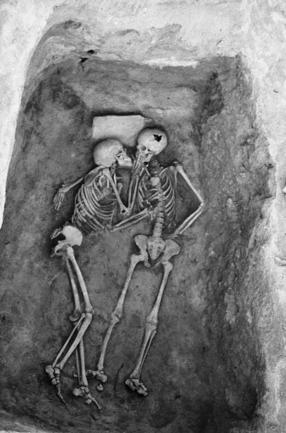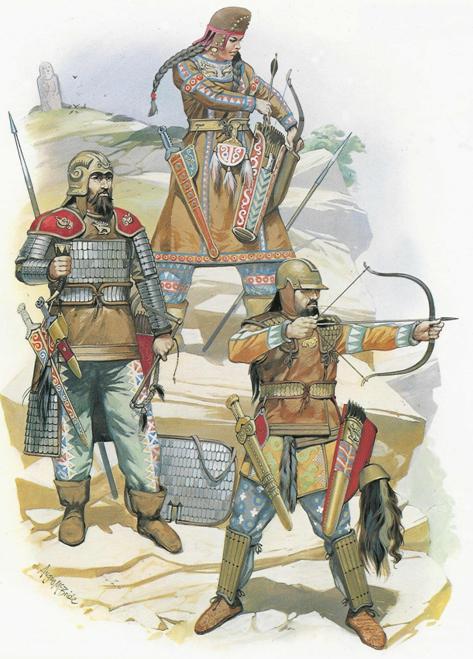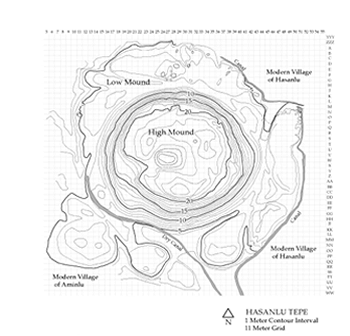One of the most remarkable finds from ancient Iran pertains to skeletons of a male and a female discovered in a tomb at Tappeh Hasanlu, located in Naqadeh, West Azerbaijan Province, northwest Iran. As noted in the Ancient Origins website:
“The human remains of the “Hasanlu Lovers” were found in a bin with no objects. The only feature found is a stone slab under the head of the skeleton on the left hand side. The discovery was made by a team of archaeologists from the University of Pennsylvania led by Robert Dyson back in 1972.”

The “Lovers of Hasanlu” (Source: Ancient Origins website). As noted in the Ancient Origins website: “The two skeletons are close together facing each other, while the female skeleton on the left reaching out its right hand to touch the face of her lover on the right. They both have their arms around each other and have clear signs of severe injury and trauma on their bodies sustained around the time of their death. Experts believe that they died together by asphyxiation during the destruction of the Teppe Hasanlu citadel”.
The Hasanlu region in Iran’s northwest region was already settled by Iranian speaking peoples at the time and that these are most likely of the Avestan culture of which one of its manifestations was the Zoroastrian religion.The photo of the Hasanlu tomb containing the skeletons of a male and female in embrace were discussed by Kaveh Farrokh in his lecture “Women in Ancient Iran” during a conference on Iranian Women at Portland State University (April 20, 2013).
The main set of Zoroastrian texts composed in Avestan promote ideas of gender parity, which was a reflection of the nature of early Iranian society (Schwartz, 2007, pp. 4). As noted by Hintze this feature provides “a modern appearance on this ancient

A reconstruction by Cernenko and Gorelik of the north-Iranian Saka or Scythians in battle (Cernenko & Gorelik, 1989, Plate F). The ancient Avestan Iranians (those in ancient Persia and the ones in ancient Eastern Europe) often had women warriors and chieftains, a practice not unlike those of the contemporary ancient Celts in ancient Central and Western Europe. What is also notable is the costume of the Iranian female warrior – this type of dress continues to appear in parts of Luristan in Western Iran.
The equality message of Zoroastrianism is declared by use of very specific and inclusive terminology. Four times in Yasna Haptaŋhāiti:
- Nar (man) and nāirī– “woman” are deliberately arranged together:
- Twice as part of fixed expression nā vā nāirī vā “a man or a woman” (Yasna Haptaŋhāiti: 35.6, 41.2)
- Twice as narąmcā nāirinąmcā “of men and women” (Yasna Haptaŋhāiti: 37.3, 39.2).
- iθā … narō aθā jə̄naiiō (thus … men, so also women) (in Yasna Haptaŋhāiti, 53.6).

A diagram of Hasanlu Tepe, which is situated to the south of Lake Urmia iin Iran’s northwest (Source: Penn Museum).
Women are described as having moral and religious equality with men. For example, one of the Zoroastrian prayers beseech Aryaman to Nərəbiiascā Nāiribiiascā Zaraθuštrahe (come to the aid of the men and women of Zarathustra). As noted in the Holy Gathas (Aiwisruthrem Gah 9):
“We venerate the righteous woman who is good in thoughts, words, and deeds, who is well-educated, is an authority on religious affairs, is progressively serene, and is like the women who belong to the Wise God.”
In the Younger Avestan both sexes are warned:
“Nōit̰ cahmi zazuua yō nōit̰ urune zazuua. Nōit̰ cahmi zazuši yā nōit̰ urune zazuši” (He has not won anything who has not won [anything] for his soul. She has not won anything who has not won [anything] for her soul) (fragment FrD.3; Hoffmann, 1968, pp. 288).
As noted by Nigosian, in the Zoroastrian faith:
“…no distinction is made between the genders…both occupy the same place of honor…on the same level in…power” (1993, pp.81).



